During GBA’s 2019 Spring Conference Annual Awards 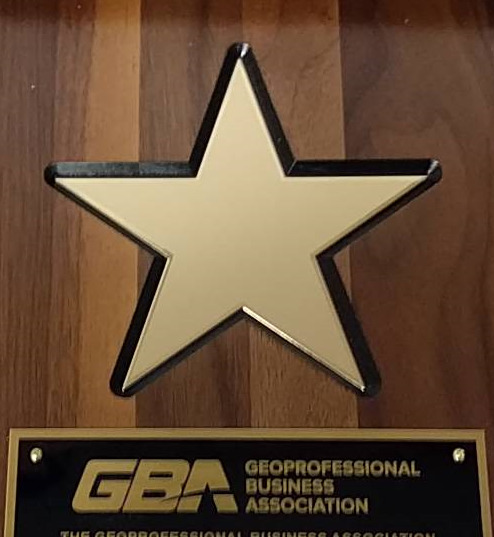 Dinner, exceptional member firms and volunteer leaders were recognized for their engagement, support, and volunteer efforts. In total, over 40 individuals were recognized and four Member Firms.
Dinner, exceptional member firms and volunteer leaders were recognized for their engagement, support, and volunteer efforts. In total, over 40 individuals were recognized and four Member Firms.
2018-2019 Member Engagement Awards
For those firms who had the highest measured engagement in GBA during our 2018-2019 year.
GBA Member Engagement Awards were given to:
- GeoProfessional Innovation Corp.
- Earth Systems
- SME
- Terracon
Award of Excellence: Kimberly F. Morrison, P.E., R.G.
In recognition of her meritorious leadership and achievement culminating in the publication of: GBA’s PROPOSED BEST PRACTICES FOR THE ENGINEER OF RECORD (EOR) FOR TAILINGS DAMS
2018-2019 President’s Award: Kurt L. Fraese, L.G., F. GBA
In recognition of his many extraordinary contributions to GBA throughout the year.
2018-2019 Certificates of Appreciation
In recognition of those who contributed to the overall success of GBA during the 2018-2019 year, Certificates of Appreciation were presented to:
Victor S. Barchers, P.E. (Kleinfelder, Inc.)
Michael Byrne, Esq. (Byrne & O’Neill, LLP)
Dan Cassidy, CPG (SME)
Michael Covert, P.G. (Terracon)
Louise D’Amico (BSK Associates)
Gary M. DeJidas, P.E. (GAI Consultants, Inc.)
Michael D. Dodd, Esq. (Shannon & Wilson, Inc.)
Victor Donald, P.E. (Terracon)
Pat Donovan, P.E. (Geotechnology, Inc.)
Richard Ecord , CIH, CSP (GZA GeoEnvironmental, Inc.)
David Faulkner, P.E. ( Faulkner Engineering Services, Inc.)
Bryan C. Field, P.E. (Braun Intertec Corporation)
Dan Gradishar, P.E. (GeoCapitol Engineering LLC)
William E. Hadge, P.E. (GZA GeoEnvironmental, Inc.)
Daniel L. Harpstead, P.E., F.GBA (Kleinfelder, Inc.)
Gregory Hebeler, Ph.D., P.E. (Golder Associates Inc.)
Kevin B. Hoppe, P.E., F.GBA (NTH Consultants, Ltd.)
Lee James, C.P.A., C.M.C., F.GBA (Lee James & Associates)
June Jewell, CPA (AEC Business Solutions, LLC)
Richard Johnson, P.G., C.E.G., C.H.G. (BSK Associates)
Paul Kohler, P.E. (S.W. Cole Engineering, Inc.)
Paul Lampe (Raba Kistner Consultants, Inc.)
Martin LaRoche, P.Eng. ( SNC-Lavalin, Inc.)
David Lourie, P.E., D.GE, F.GBA (Lourie Consulatnts)
Michael J. Marasa, P.E. (Hayward Baker, Inc.)
Aaron J. Mann, Esq. (Terracon)
Guy Marcozzi, P.E. (Duffield Associates, Inc.)
Jay Martin, P.E., F.GBA ( WOOD)
Randy Martin, P.E. (S&ME, Inc.)
Richard A. Millet, P.E., F. GBA (AECOM)
Matt Moler, P.E. (S&ME, Inc.)
Steve Noble, P.E., PTOE (DOWL)
Helen Pappas, CHMM ( Gannett Fleming, Inc.)
Laura R. Reinbold, P.E., F.GBA (Terracon)
Gerald J. Salontai, P.E., (Salontai Consulting Group, LLC)
Terence “Terry” Scanlan, Esq., (Skellenger Bender)
Daniel Schaefer, P.E, CHMM (Froehling & Robertson, Inc.)
Daniel F. Schneider, P.E. (Terracon)
Leo Titus, P.E., ( ECS, Ltd.)
Woody Vogt. P.E., D.GE, F.ASCE, F. ACI, F.ASTM (Paradigm Consultants, Inc.)
Steve Wendland, P.E, R.G., D.GE ( Kleinfelder, Inc.)
Edward Wilson, P.E., F. GBA (L. Edward Wilson and Associates, Inc.)
Jim Withiam, Ph.D., P.E., D.GE, F.GBA (D’Appolonia Engineering)
Michael Yost, Esq. ( Terracon)
Congratulations to all the award winners and thank you to all who contributed to our successful year.
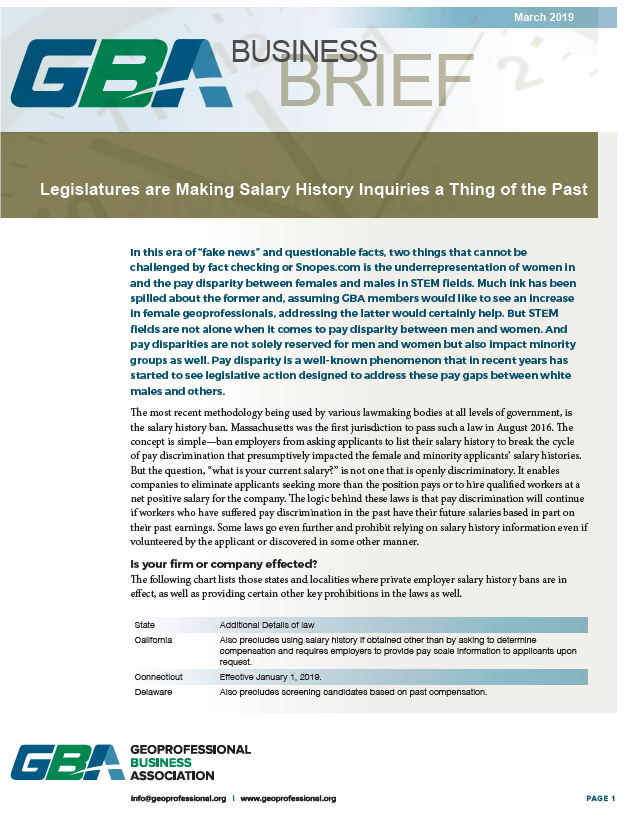
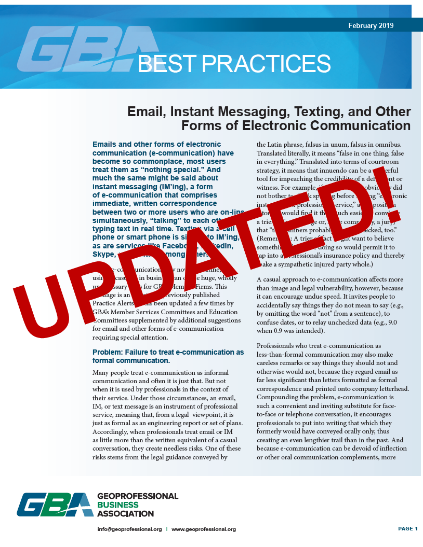
 Dinner, exceptional member firms and volunteer leaders were recognized for their engagement, support, and volunteer efforts. In total, over 40 individuals were recognized and four Member Firms.
Dinner, exceptional member firms and volunteer leaders were recognized for their engagement, support, and volunteer efforts. In total, over 40 individuals were recognized and four Member Firms.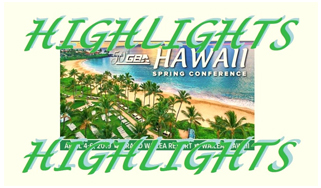
 association the opportunity to prepare for the future by replenishing in our reserve fund. Our growing financial strength is underscored by the positive view our members have of the current economy. An instant poll of the participants on the topic of business climate described the overall feeling of members as “optimistic” and “busy,” with 60 percent anticipating increases in revenue over the next year. Members expressed that their biggest 2019 challenge was the recruiting and retention of staff.
association the opportunity to prepare for the future by replenishing in our reserve fund. Our growing financial strength is underscored by the positive view our members have of the current economy. An instant poll of the participants on the topic of business climate described the overall feeling of members as “optimistic” and “busy,” with 60 percent anticipating increases in revenue over the next year. Members expressed that their biggest 2019 challenge was the recruiting and retention of staff.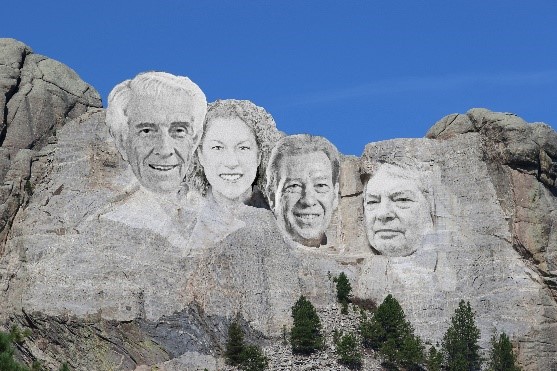 In a panel discussion, Past President’s and GBA Fellows Laura Reinbold (2016-2017), Gerry Salontai (2004-2005), Rich Millet (1997-1998) and Ed Wilson (1989-1990) reflected on GBA leadership accomplishments and the way we get things done. Highlights included descriptions of the origin of limitation of liability, peer review and alternative dispute resolution. It was noted that all of these powerful tools were individual ideas that were brought to the organization and perfected by committees. GBA has a great tradition of honoring individual thought and making the best ideas actionable. We were reminded that no other professional association has as much collegiality as GBA because at our core we have demonstrated decades of trust and delivering value.
In a panel discussion, Past President’s and GBA Fellows Laura Reinbold (2016-2017), Gerry Salontai (2004-2005), Rich Millet (1997-1998) and Ed Wilson (1989-1990) reflected on GBA leadership accomplishments and the way we get things done. Highlights included descriptions of the origin of limitation of liability, peer review and alternative dispute resolution. It was noted that all of these powerful tools were individual ideas that were brought to the organization and perfected by committees. GBA has a great tradition of honoring individual thought and making the best ideas actionable. We were reminded that no other professional association has as much collegiality as GBA because at our core we have demonstrated decades of trust and delivering value.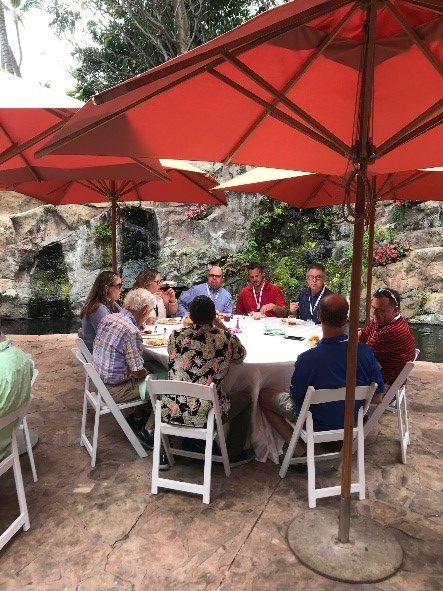
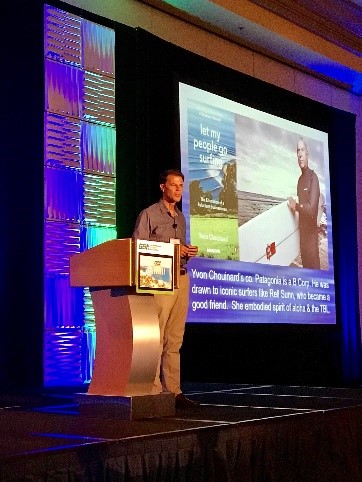 Who says geoprofessionals aren’t funny? We were taught powerful communications techniques through the lessons of improvisational comedy by Nancy Watt, a Second City Conservatory Graduate. The session included audience participation in demonstrating that anyone can learn these techniques of effective communication and collaboration. It all starts with speaking and listening from a “Yes, and…” rather than a “Yes, but…” perspective. It also proved we have some real comedians among our members.
Who says geoprofessionals aren’t funny? We were taught powerful communications techniques through the lessons of improvisational comedy by Nancy Watt, a Second City Conservatory Graduate. The session included audience participation in demonstrating that anyone can learn these techniques of effective communication and collaboration. It all starts with speaking and listening from a “Yes, and…” rather than a “Yes, but…” perspective. It also proved we have some real comedians among our members.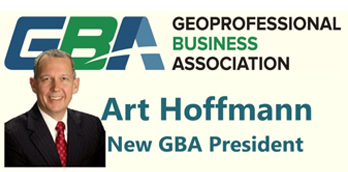
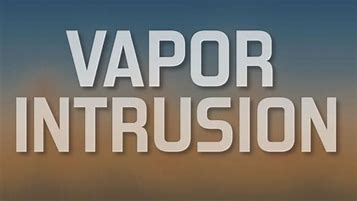
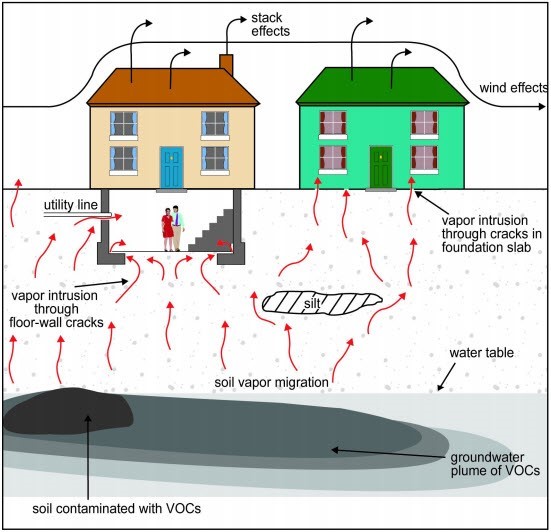
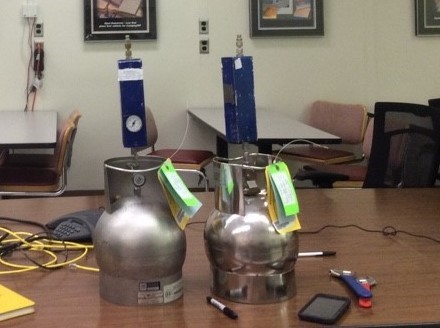 to many variables, including environmental condition (e.g. temperature, barometric pressure, wind, and precipitation), and building conditions (e.g., heating and cooling system operations, door and window positions). Another complicating factor of VI assessments is understanding whether indoor air contamination is a result background sources such as stored chemicals in the building, or even building materials. Thus, it is difficult to collect a single sample and draw conclusions about VI risk.
to many variables, including environmental condition (e.g. temperature, barometric pressure, wind, and precipitation), and building conditions (e.g., heating and cooling system operations, door and window positions). Another complicating factor of VI assessments is understanding whether indoor air contamination is a result background sources such as stored chemicals in the building, or even building materials. Thus, it is difficult to collect a single sample and draw conclusions about VI risk.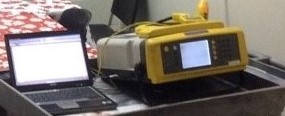 potential background vapor concerns in discrete areas of the building without the added costs of a mobile laboratory.
potential background vapor concerns in discrete areas of the building without the added costs of a mobile laboratory.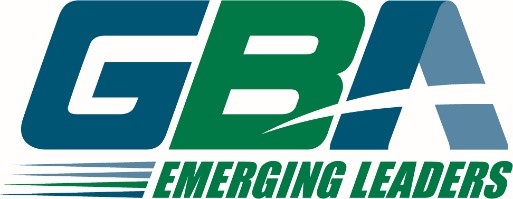 potential as consultants and business leaders. Our goal is to provide those future leaders with tools to accelerate their growth and unleash their potential through education, networking, and collaboration. While networking with other similar emerging leaders, each emerging leader will expand their knowledge through GBA’s unique business-education resources associated with risk management and business performance optimization.
potential as consultants and business leaders. Our goal is to provide those future leaders with tools to accelerate their growth and unleash their potential through education, networking, and collaboration. While networking with other similar emerging leaders, each emerging leader will expand their knowledge through GBA’s unique business-education resources associated with risk management and business performance optimization. GBA President-Elect Arthur G. “Art” Hoffmann, P.E., D.GE (Gannett Fleming, Inc.) will become President and Chair of the GBA Board of Directors.
GBA President-Elect Arthur G. “Art” Hoffmann, P.E., D.GE (Gannett Fleming, Inc.) will become President and Chair of the GBA Board of Directors. 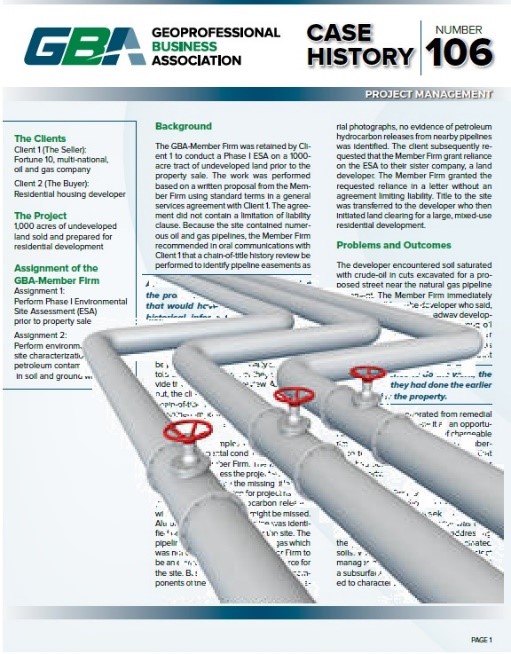 and instead told the Member Firm that they would provide title information for review.
and instead told the Member Firm that they would provide title information for review.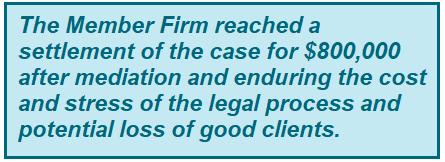 has a tradition of collaborating on issues that impact the geoprofessions through GBA Case Histories. GBA Case Histories provide unprecedented real-world learning examples related to project and business management. Learn where others went wrong, how they handled their problems, and how you can learn from their experiences to avoid the same problems in the future.
has a tradition of collaborating on issues that impact the geoprofessions through GBA Case Histories. GBA Case Histories provide unprecedented real-world learning examples related to project and business management. Learn where others went wrong, how they handled their problems, and how you can learn from their experiences to avoid the same problems in the future.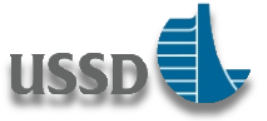
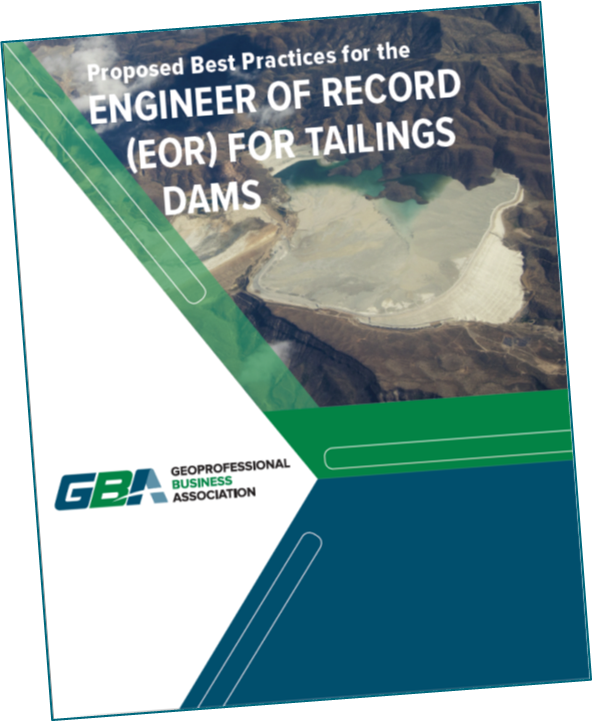 In February 2019, the United States Society on Dams (USSD) announced their endorsement of GBA’s recently published Proposed Best practices for the Engineer of Record (EOR) for Tailings Dams.
In February 2019, the United States Society on Dams (USSD) announced their endorsement of GBA’s recently published Proposed Best practices for the Engineer of Record (EOR) for Tailings Dams.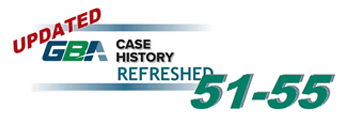 the mistakes of the past! GBA Case Histories are being used by our members for loss prevention discussions in support of professional development and mentoring.That is why GBA case histories are so valuable, and why GBA is updating them all, while adding new ones, too. We are halfway there as five more case histories have been re-issued.
the mistakes of the past! GBA Case Histories are being used by our members for loss prevention discussions in support of professional development and mentoring.That is why GBA case histories are so valuable, and why GBA is updating them all, while adding new ones, too. We are halfway there as five more case histories have been re-issued. Although the Member Firm’s CEO got personally involved and “saved the day,” serious problems arose. The firm had to pay $350,000 to extricate itself, because a judge or jury probably would not have understood the technical intricacies that proved the member was blameless.
Although the Member Firm’s CEO got personally involved and “saved the day,” serious problems arose. The firm had to pay $350,000 to extricate itself, because a judge or jury probably would not have understood the technical intricacies that proved the member was blameless.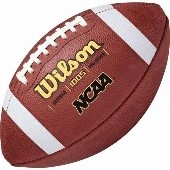 itself from a football stadium rebuilding project. Problems arose when its original recommendations were not followed. The firm was unaware of certain changes that were made, but casual language in a report made that position difficult to defend.
itself from a football stadium rebuilding project. Problems arose when its original recommendations were not followed. The firm was unaware of certain changes that were made, but casual language in a report made that position difficult to defend.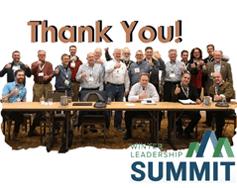
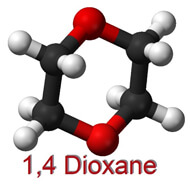
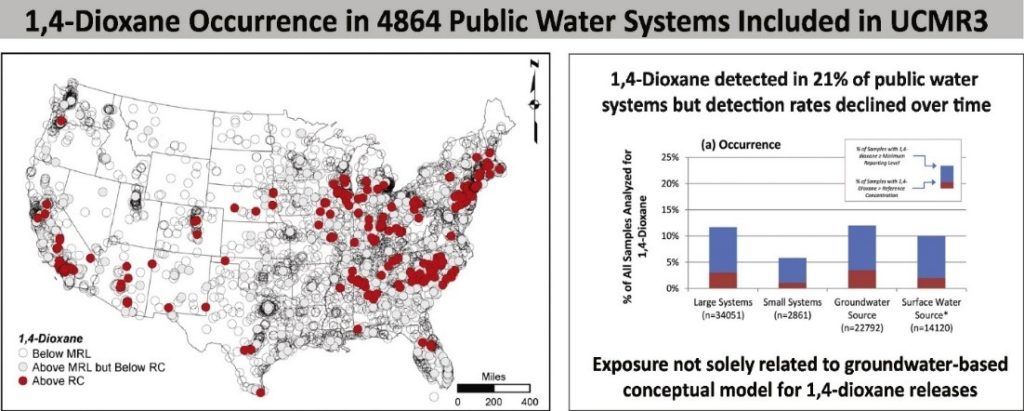
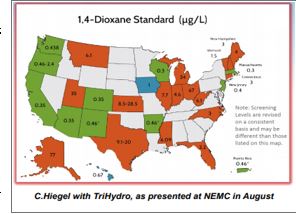 is the regulatory framework. USEPA has notestablished a Maximum Contaminant Level (MCL)for 1,4 dioxane. The graphic presented below showscurrent state health advisory levels. USEPA has established a 0.35 ug/L for a 10-6 cancer risk in drinking water. A reportable quantity of 100 pounds has been established by EPA under the Comprehensive Environmental Response, Compensation, and Liability Act (CERCLA).
is the regulatory framework. USEPA has notestablished a Maximum Contaminant Level (MCL)for 1,4 dioxane. The graphic presented below showscurrent state health advisory levels. USEPA has established a 0.35 ug/L for a 10-6 cancer risk in drinking water. A reportable quantity of 100 pounds has been established by EPA under the Comprehensive Environmental Response, Compensation, and Liability Act (CERCLA).